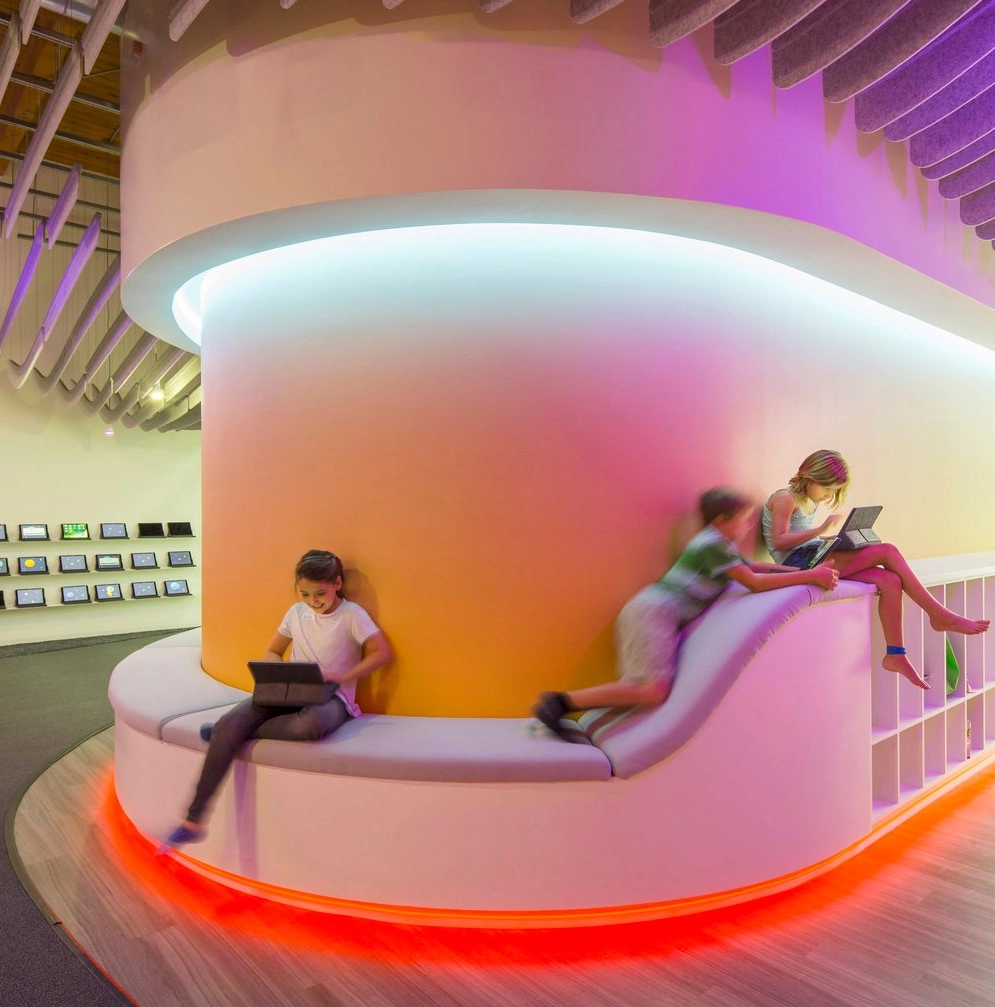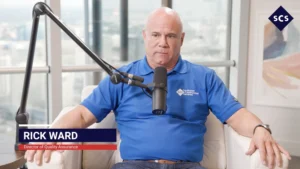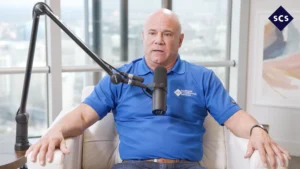Faces of Design: Designing Your Own Future
Breaking Out Of The Mold
Interior designers are often stereotyped as those obsessed with glamour and extravagance. While designers do appreciate the finer details in a space, they often are not lauded for the behind the scenes work it takes to get to the finish line. For every glossy spread in Interior Design Magazine, there were hundreds of hours spent laboring over the details. In the case of Sarah Kuchar, she literally rolled up her sleeves to build her own dreams.
Burning the midnight oil is commonplace for Kuchar, an interior designer from Chicago who, at the age of 33, founded her own interior design studio. In doing so, she left behind a comfortable job at one of the most prominent architecture firms in the world. For Kuchar, it boiled down to a simple question – was she doing the type of design projects she loved? Was she able to put her unique stamp on the world, or was being one of a stable of designers robbing her of the chance to stretch, grow and be the designer she wanted to be?
Fast forward three years, and Kuchar’s growing team is making a name for itself on projects that “big guys” would never touch.
DESIGNING FOR THE CODING GENERATION
Perhaps the most unique project Kuchar (and her team at Sarah Kuchar Studios) has worked on to-date is for Codeverse, an afterschool academy dedicated to “teaching a million kids to code.” The learning space, located in the Lincoln Park neighborhood of Chicago, is a techy kid’s dream come true. There is a classroom that kids can “hack” into the environment of lights, sounds, and other stimuli. There are wall-to-wall monitors, robotics, more iPads than your local Best Buy, and it is all tied together in a way that makes you feel like you’re in a spaceship designed specifically for a 13-year-old.

“We worked with the founders of Codeverse to create this dreamy space,” Kuchar said. “Our goal was to pack the building with nooks and crannies that made the kids want to explore, learn, and grow.”
Speaking of growth, there is a live moss-wall in one of the classrooms, a subtle nod to the impact the technology these students use has on the outside world.

Finding The Perfect Space
Kuchar quickly learned that working out of your living room sounds glamorous for about a day or two. Soon after she left her comfortable corporate job, she was in the market for a co-working space, eventually landing on a trendy WeWork office in downtown Chicago. In the beginning, it was perfect for her needs. Flexible, fun, and vibrant. The space could grow as her team did and it allowed her to sign a month-to-month lease.

Soon, Kuchar and her team realized they needed more space to breathe. Interior designers are known as the masters of materials, and materials take up more space than WeWork could provide. She realized the team needed to begin to build its own design and materials library wherever they worked, so Kuchar started taking alternative routes from her home on the Northside of Chicago into the WeWork space, adding more and more travel time each day in her quest to find a space that could meet her needs.
Until one day, Kuchar saw it – a repurposed industrial building in West Town that had plenty of bumps and bruises, but seemed to have potential. Something about the building grabbed her as she drove by, and she decided to search online and learn more about who inhabited the space. It turns out, it was filled with creative professionals who had coincidentally found each other and turned this worn-down building into a hub of makers, designers, photographers, and more.
The landlord only had one space left in the building, and it was considerably more space than Kuchar and her team needed. But inspired by the building, and having a sincere desire to make this dream even more real, she signed a lease with a plan for the extra space.

The dilemma Kuchar found herself in at WeWork inspired her to do something about it. If she, an interior designer with a need for flexible office space, could not have her needs met by perhaps the most prevalent co-working company in the world, she guessed others were having a similar problem as well. Armed with that theory, she opened “Studio Hub,” a first-of-its-kind design studio and co-working space specifically tailored for interior designers. Tenants of Studio Hub enjoy a shared materials library and access to manufacturers representatives that otherwise would not have younger or less established designers on their radar when they made their rounds to design firms in the city. Just like that, a business within a business was born.
Recruiting The First Clients
We sat down with Kuchar at Studio Hub to talk about the road of the entrepreneur, taking a giant leap of faith, and advice she would give to her peers who have dreamt “what if” more times than they can count.
When you decided you wanted to start your own business, what was the first step you took?
“I knew that any studio or firm was only as good as their clients. I had to start recruiting and building a client base that believed in what I could do and my vision for their projects. I knew that as soon as I struck out on my own, people would want to know what kind of solo work I had completed, so finding those first few clients to take a chance on me before I was established was crucial.”

Kuchar started freelancing at night. Her 50-60-hour work week at her corporate design firm often turned into 70-80-hour work weeks, hustling on nights and weekends to cut her teeth and prove she was capable on her own. For almost two years, she built not only a client base, but a business plan on how she was going to scale her team and become sustainable.
What does a young designer need to “make it” in this industry?
“So many things can be taught, but I really believe you can’t teach work ethic. You either have it or you don’t,” Kuchar said. “It’s often the first thing I look for as we’re growing our team.”

A perfect example of this is when Kuchar was opening Studio Hub last year. As an entrepreneur that was also a designer, she was on a fast-food budget with five-star taste in how her space should be designed and laid out. The solution? Do most of the work herself (and with the help of some close friends). And so, Studio Hub was built, on the literal hands and knees of the people who believed in it. They installed carpet, their own wood floors, tack walls, and even their IKEA kitchen components.
What would you say to an interior designer who is sitting on the other side of the decision you made, wondering if they should go for it?
“Maybe it’s cliché, but you’ll always wonder until you try it,” Kuchar shared. “There was never a moment when I was certain this was going to work. There was always doubt. But I believed that the momentum I was building could turn into something special, so I decided I wasn’t going to give up.”
We are not looking back at this retrospectively, this Face of Design is not entering the final stages of her career. Quite the opposite, Kuchar is just getting started. But this series was intended to shine a light on those flying under the radar and solving problems creative ways. The results: risk and reward. In this case, the risk of a comfortable job at a trusted industry giant. The reward, a life of flexibility to pursue passions and say “yes” to ideas that were not possible before.
STAY TUNED FOR OUR PODCAST WITH SARAH KUCHAR, BRYCE STUCKENSCHNEIDER, AND DANIEL LITWIN.










